Block style letter template
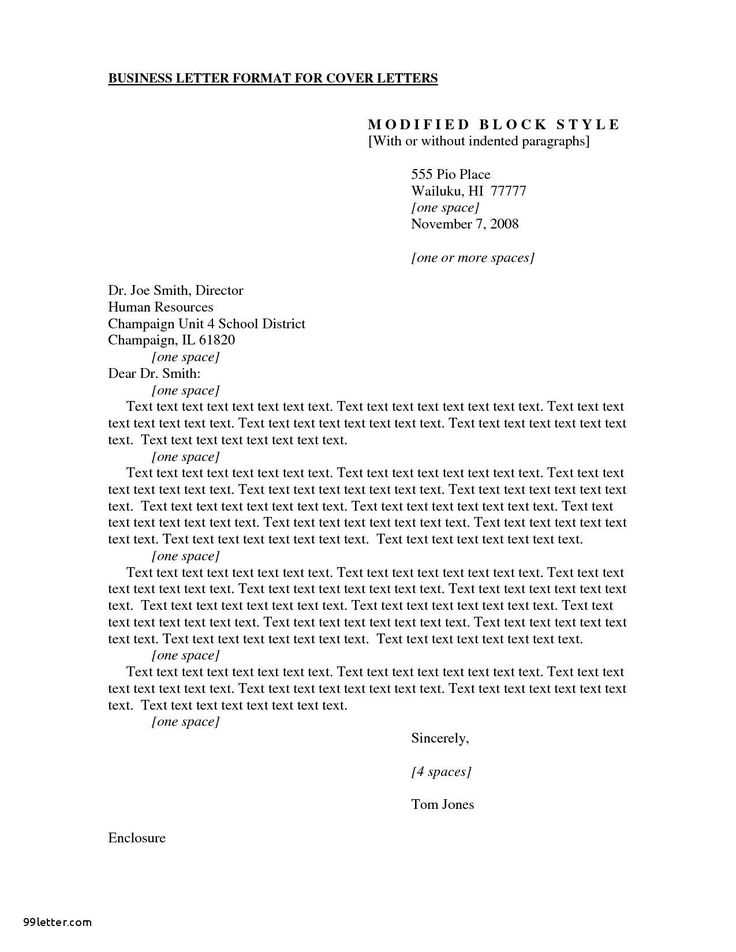
Key Features of Block Style Letters
Block style letters are known for their simplicity and clarity. All parts of the letter, including the sender’s address, date, salutation, body, and signature, are aligned to the left margin. No indentation is used for paragraphs, which keeps the layout clean and organized. This format is commonly used in professional communication, as it appears formal and easy to read.
Formatting Tips
- Sender’s Address: Begin with the sender’s address without a name. It should be left-aligned, followed by a blank line.
- Date: The date should appear directly below the sender’s address. It can be written in any formal date format, e.g., “January 28, 2025.”
- Inside Address: This section includes the recipient’s name, title, company name, and address. Align it to the left as well, followed by a blank line before the salutation.
- Salutation: Use a formal greeting such as “Dear Mr. Smith” or “To Whom It May Concern.” End with a colon.
- Body of the Letter: Write the body in short, concise paragraphs. Each paragraph should be separated by a single line.
- Complimentary Close: Common closings include “Sincerely,” “Best regards,” or “Yours faithfully.” Align it to the left and add a comma.
- Signature: Leave space for the signature between the complimentary close and the sender’s typed name. Sign your name in this space.
Example Template
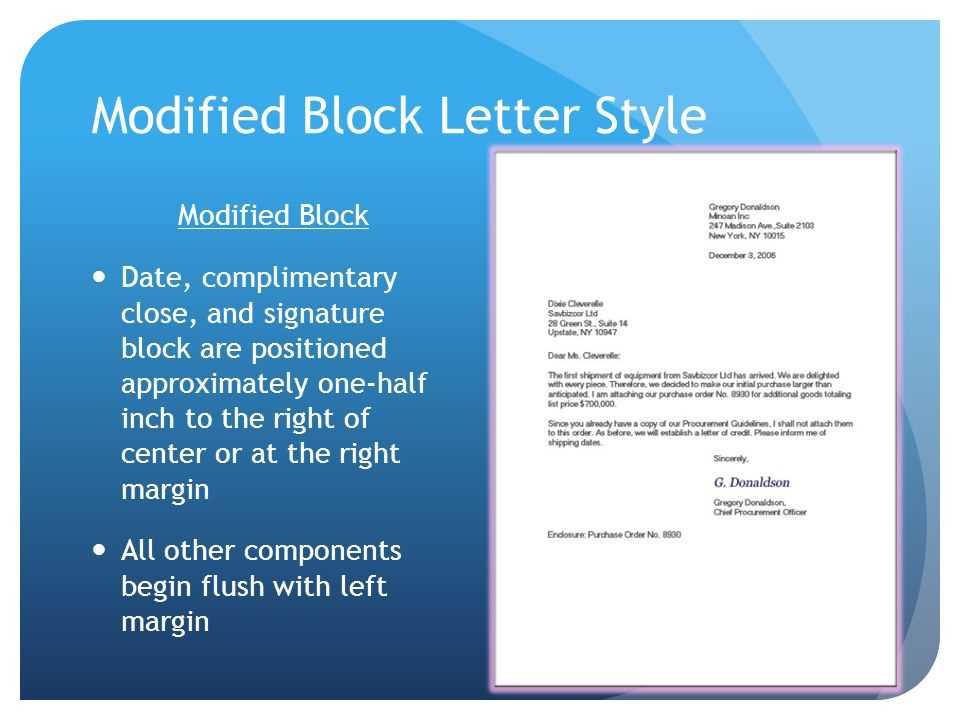
Sender’s Address:
123 Main Street
Anytown, USA 12345
Date:
January 28, 2025
Inside Address:
John Doe
XYZ Company
456 Corporate Blvd
Anytown, USA 67890
Salutation:
Dear Mr. Doe:
Body:
I hope this letter finds you well. I am writing to inform you about an upcoming meeting scheduled for next week. Please let me know if this time works for you.
Complimentary Close:
Sincerely,
Signature:
[Your Signature]
[Your Name]
When to Use Block Style
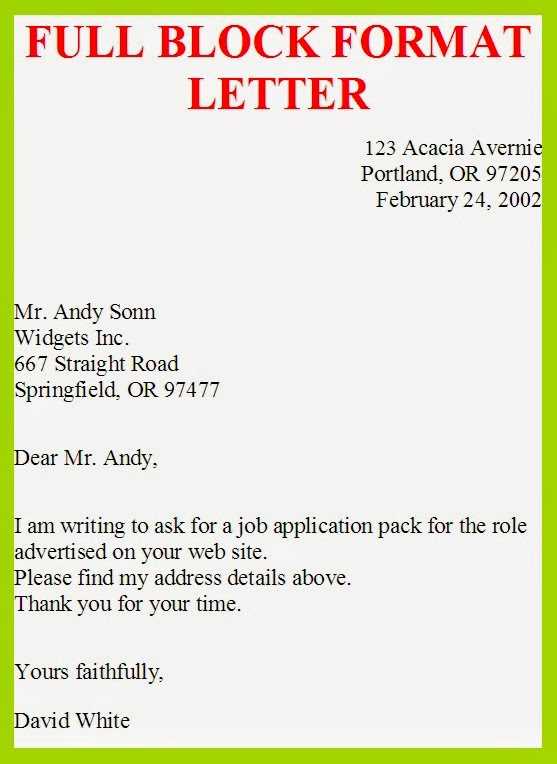
Block style letters are often preferred for formal correspondence in business, legal, and academic settings. They are considered the most straightforward format for clear communication. Use this format when you want to present information professionally and without unnecessary decoration or complexity.
Block Style Letter Template
How to Format the Header in Block Letters
Choosing the Right Salutation for Your Letter
Organizing the Body Using Block Style
When to Use Paragraph Breaks in Block Format
Closing Your Letter Professionally
Common Mistakes to Avoid in Letter Writing
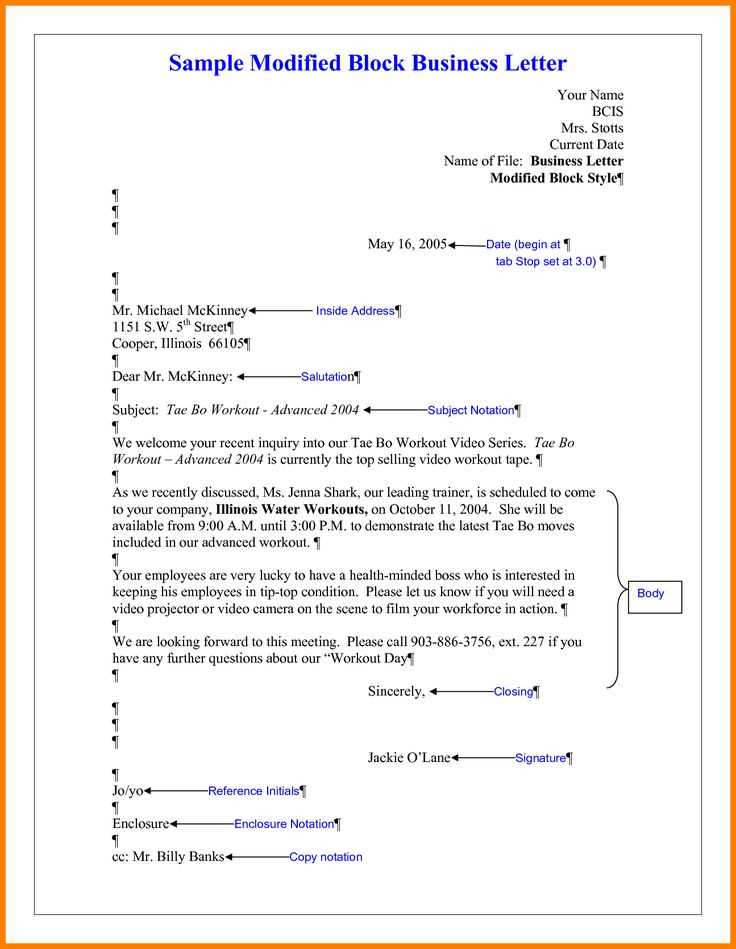
To format the header in block style, align all elements to the left. Start with your contact information at the top, followed by the recipient’s details. There should be a clear line of space between the sender’s and recipient’s information, with the date placed just before the salutation. Ensure all lines are aligned to the left margin, avoiding any indentation.
Choosing the Right Salutation for Your Letter
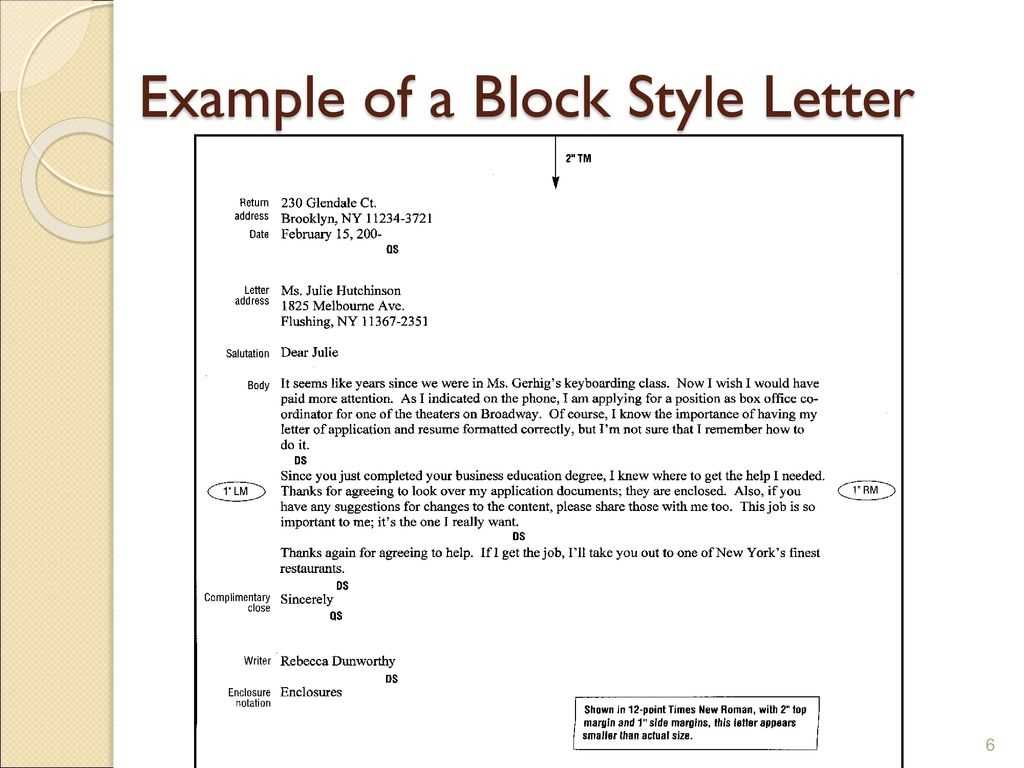
Your salutation should match the tone of your letter. Use “Dear [Recipient’s Name]” for formal communication. If you’re unsure about the recipient’s gender, you can use their full name instead. Avoid overly casual greetings in professional letters; stick to respectful and neutral options.
Organizing the Body Using Block Style
In block style, the body of the letter starts directly after the salutation with no indentation. Keep each paragraph flush to the left margin. Ensure that paragraphs are separated by a blank line for clarity, and maintain consistent alignment throughout the letter. Each paragraph should express a clear idea, and transitions should feel smooth to keep the reader engaged.
When structuring the content, aim for logical flow. Start with an introduction or purpose of the letter, followed by supporting details, and conclude with a clear closing statement or request. This structure maintains readability and purpose.
When to Use Paragraph Breaks in Block Format
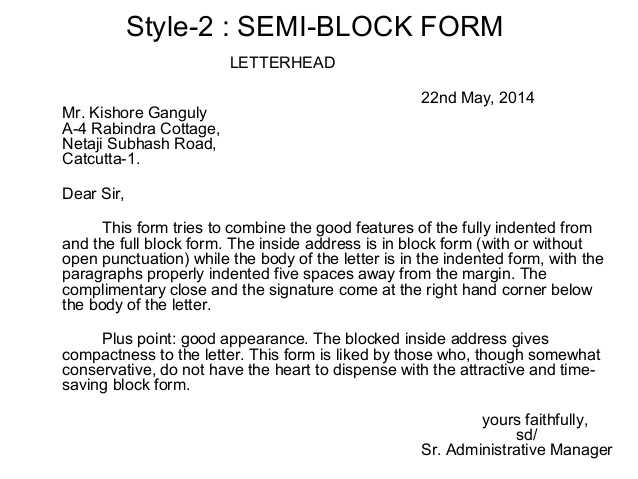
Paragraph breaks are necessary when you move on to a new topic or idea. Avoid long blocks of text, as they can overwhelm the reader. For example, after introducing yourself, start a new paragraph to explain the main reason for your communication. Keep each section focused and to the point.
Closing your letter professionally is key to leaving a positive impression. Use “Sincerely” or “Best regards” followed by your name. If relevant, include your title or position beneath your name to provide further context. Ensure there is a space between the closing and your name to avoid a cluttered look.
Avoid common mistakes such as incorrect punctuation in the salutation, inconsistent formatting of paragraphs, and failing to leave enough space between sections. These errors can make your letter appear disorganized and unprofessional. Keep the layout consistent and always proofread for clarity and accuracy.